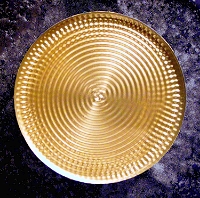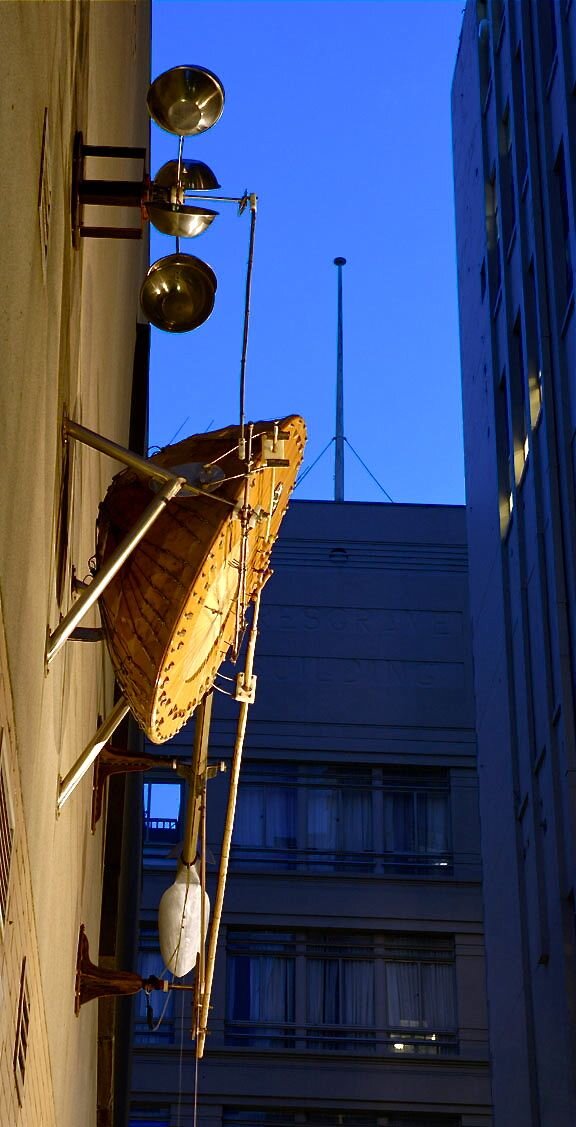

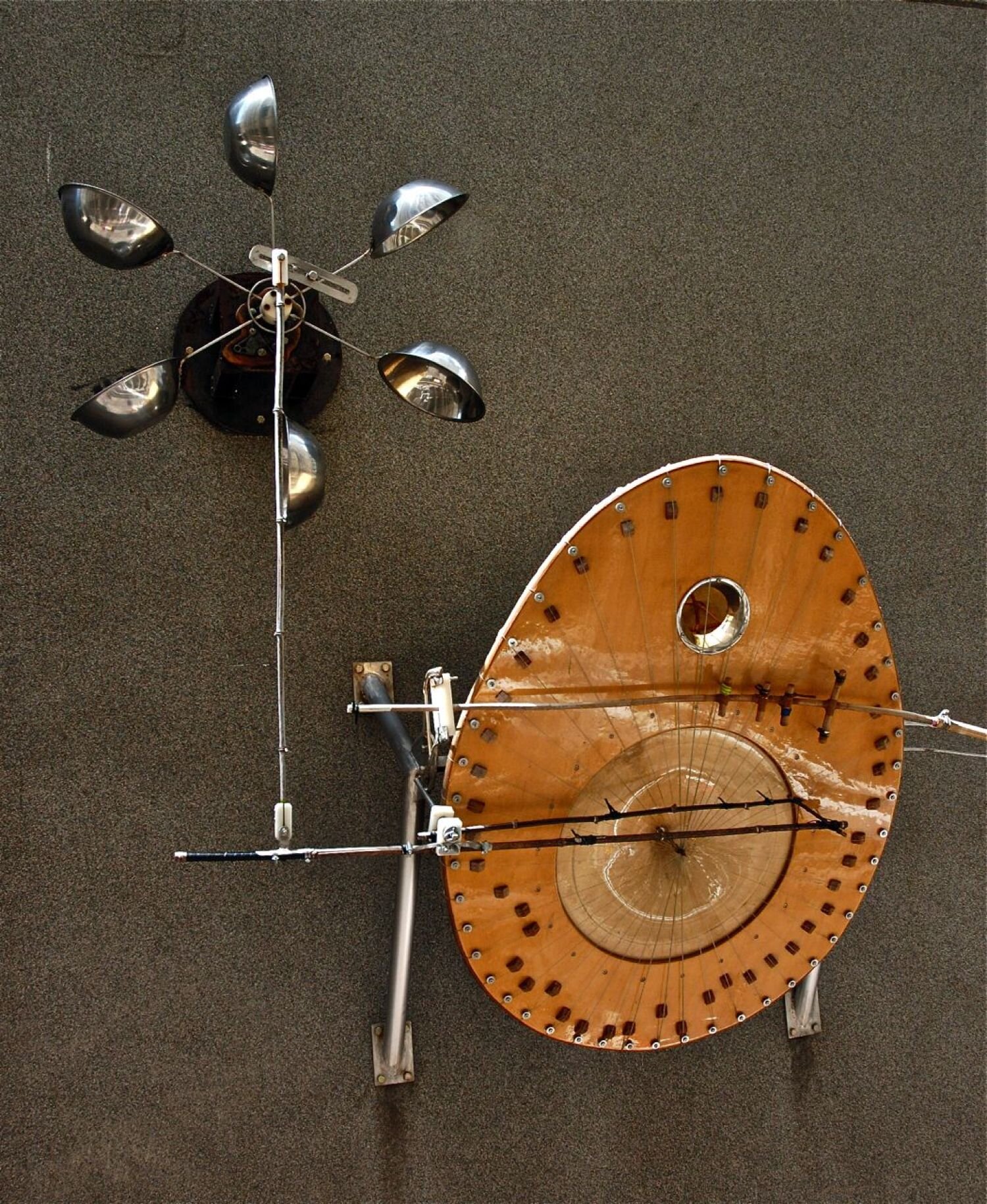


Weather Harp
2003 – Stainless Steel, timber, epoxy, aluminum, goatskin, mixed media – 2.4m x 7m x 1m
This work was one of the Melbourne City Council's Lane-way Commissions. The Weather Harp was designed to harness the wind currents in a barren section of Sugden Place and create a musical backdrop and visual focus to the site. The wind-cup attachment played the melody as it turned, plucking the strings, whilst the balance arm (designed and made by Cameron Robbins, also of Down Street Studios), played the bass line. This work was only meant to stay up for a year, however, it got to stay up for two years due to its popularity with the locals.
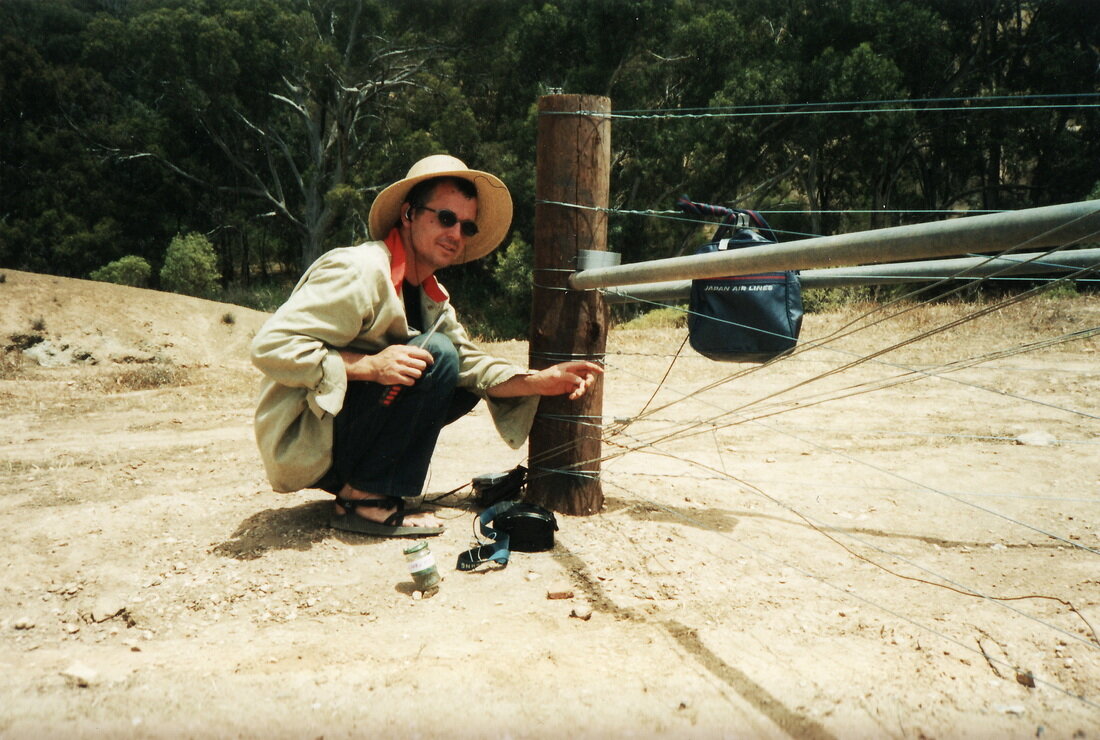
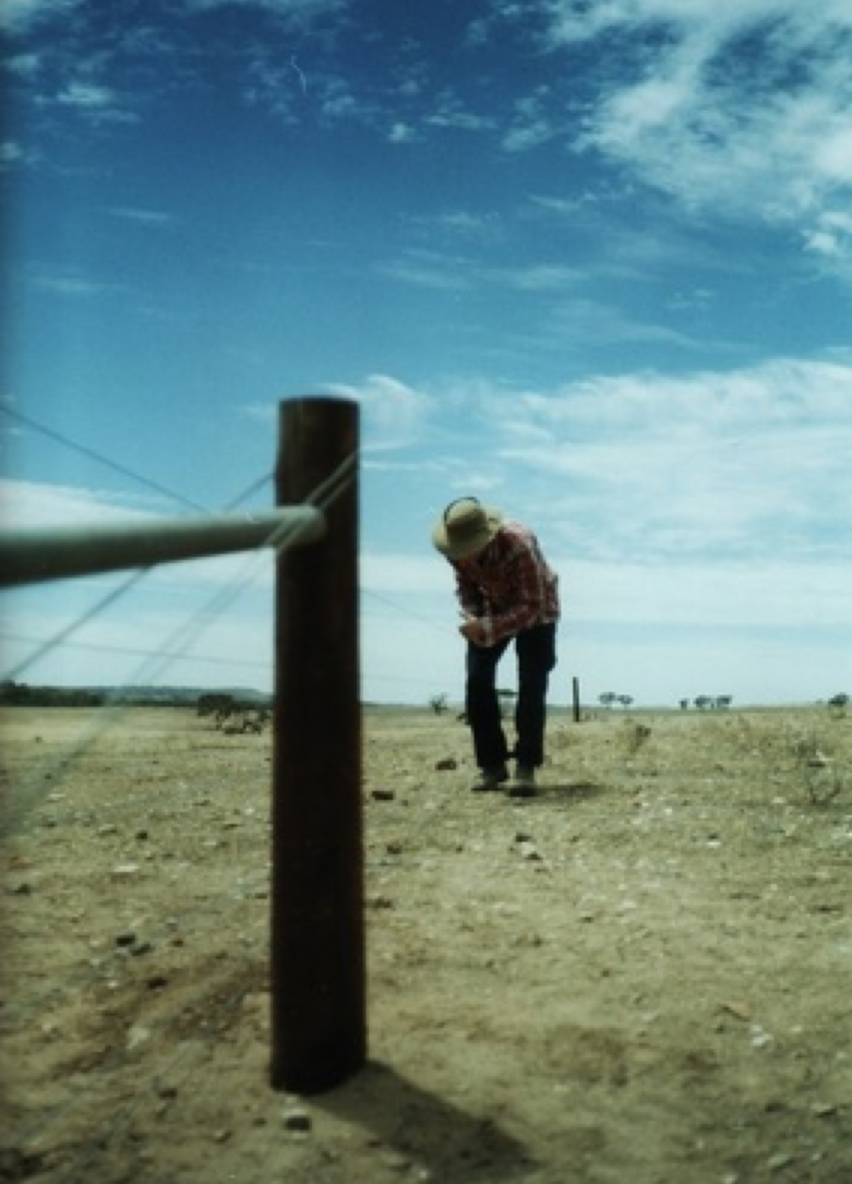
The Fence
2002 - Collaboration with Michael Havir
This was a collaboration with Micheal Havir, in which numerous recordings were made of a partially built fence in the Burra Gorge, South Australia. The audio recording here is part of that work, and it is as it was recorded, with no effects added to it at all. The extraordinary sounds that were captured are the sounds of the fence wires and posts being hit, plucked, and scraped.
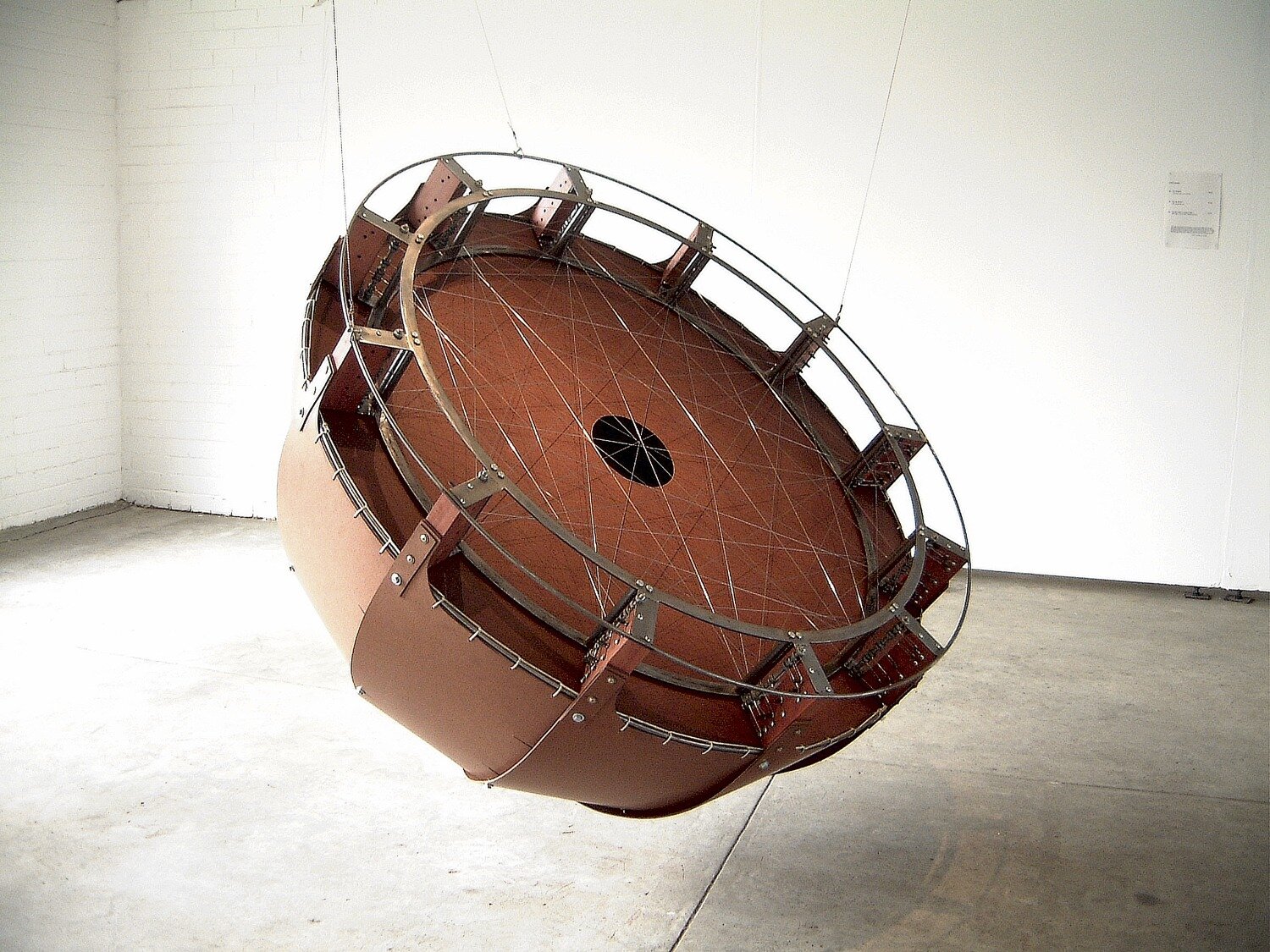
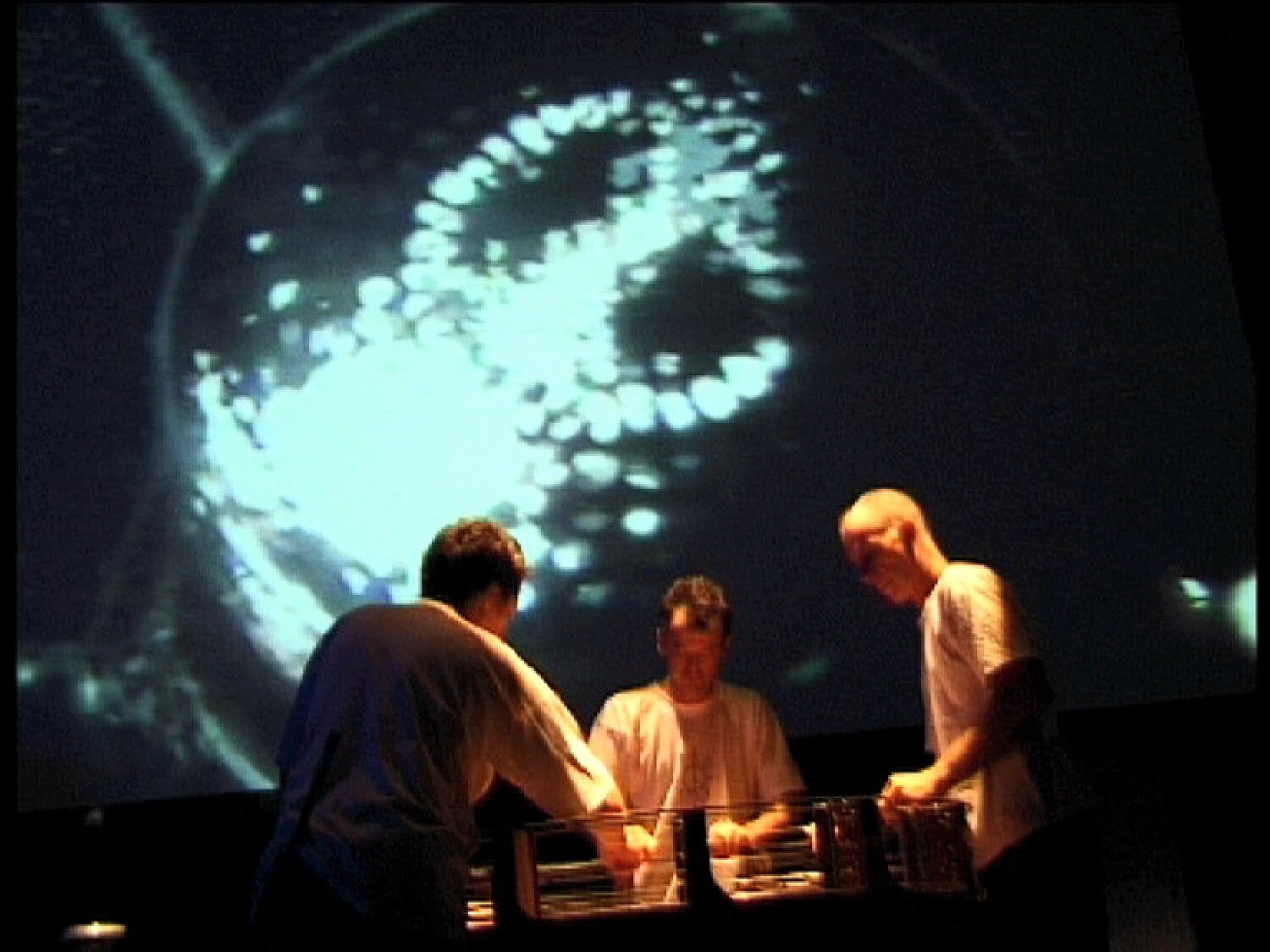
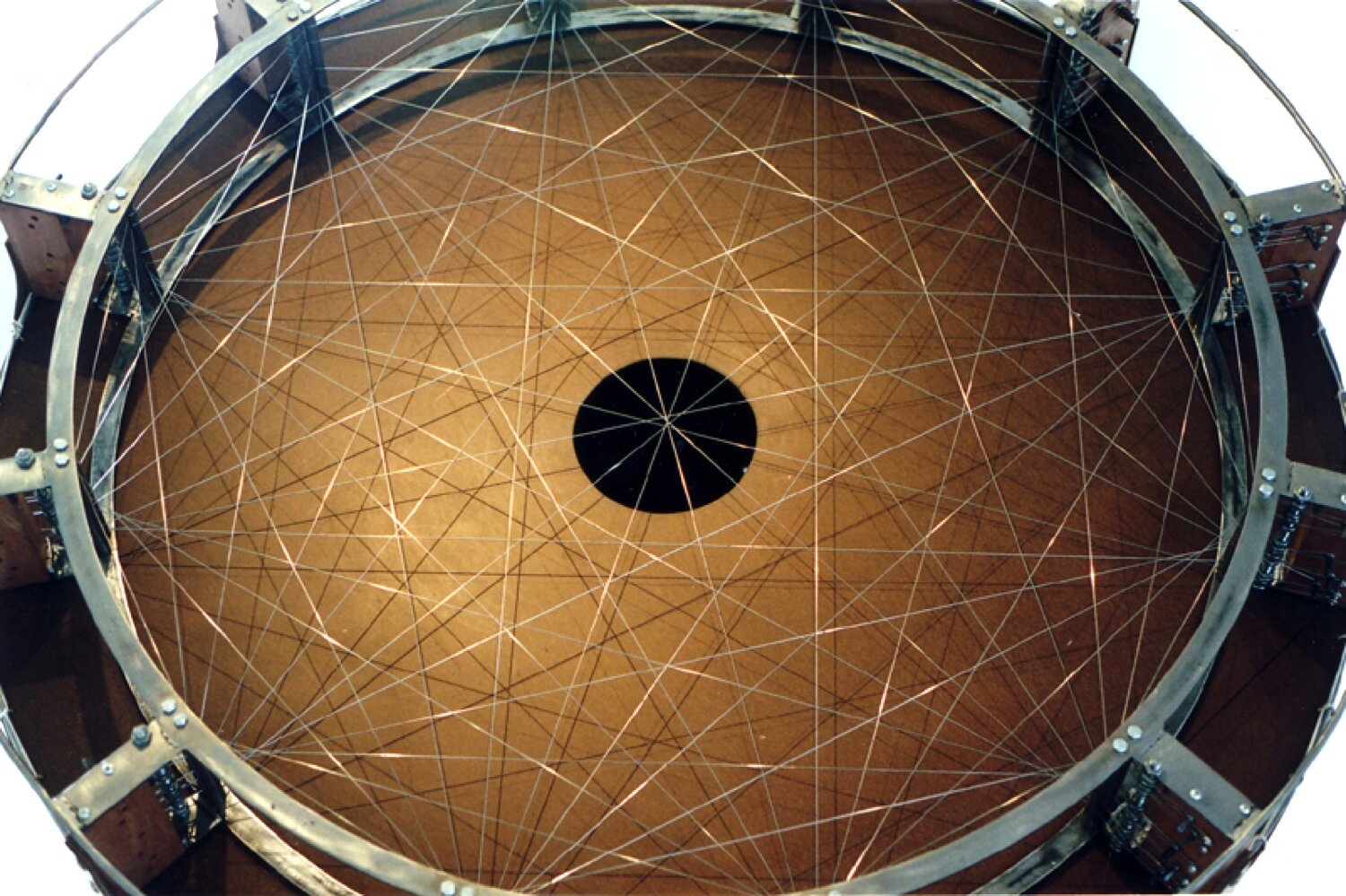
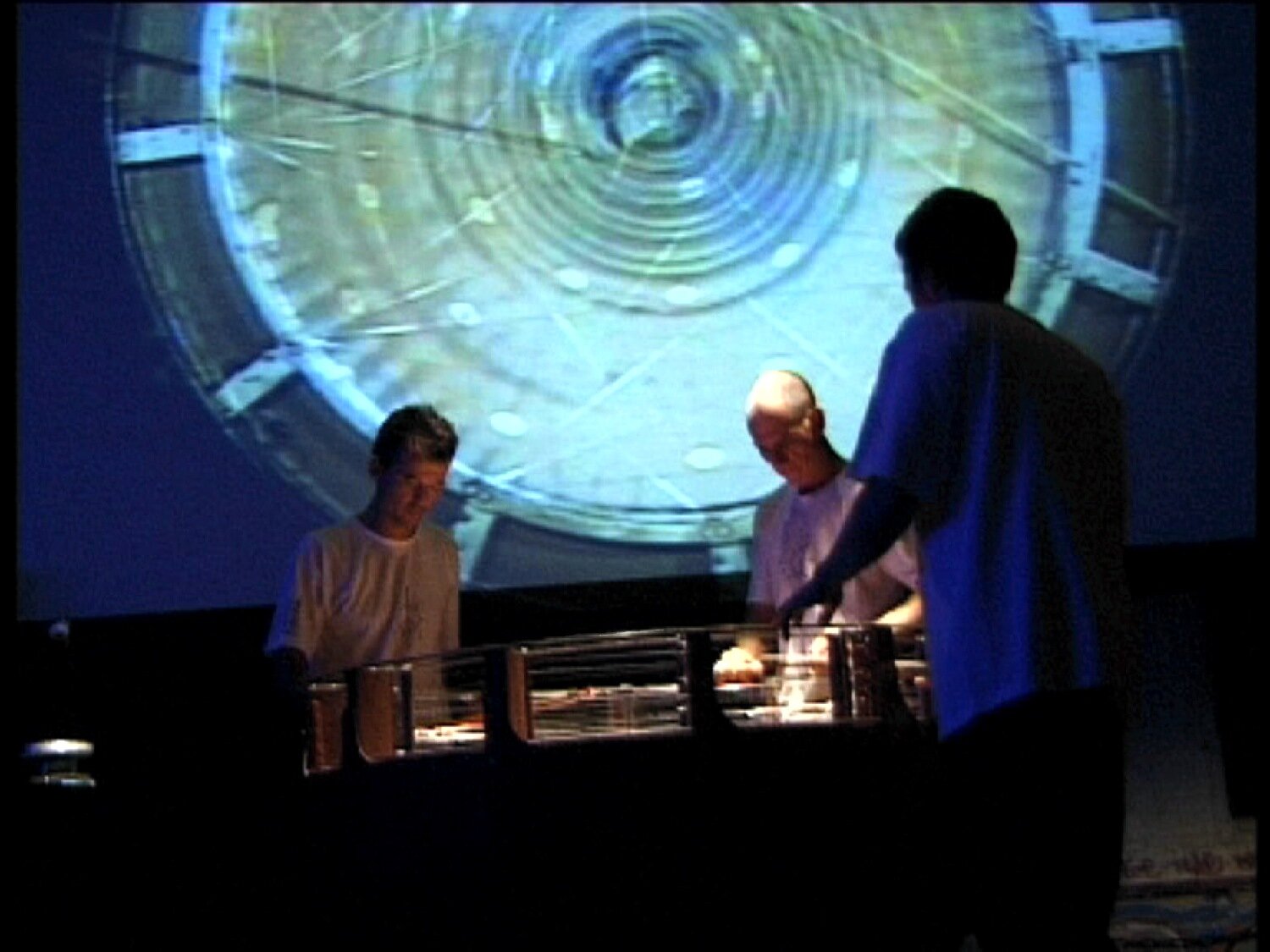
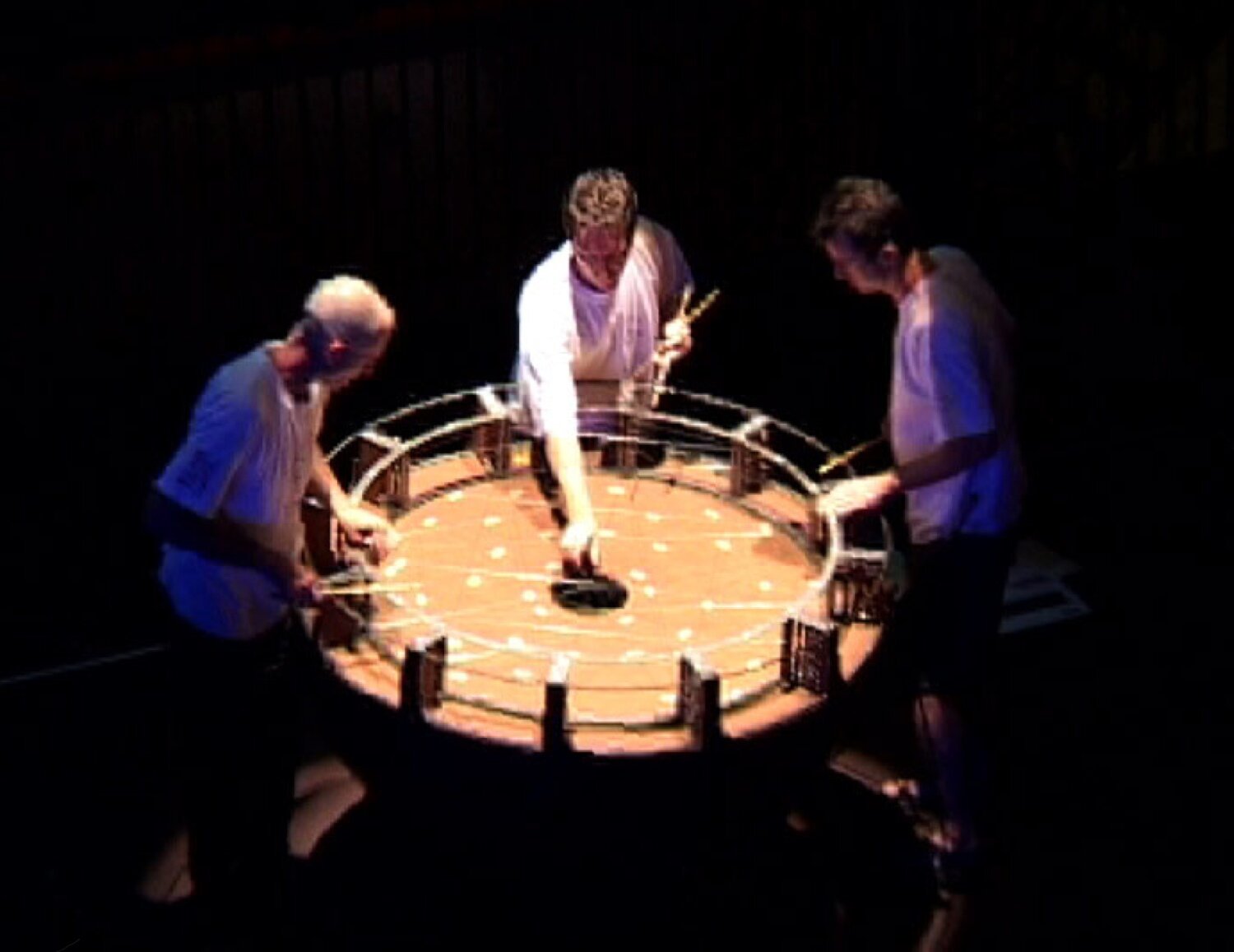

The Circular Harp
2002 - Steel, piano wire, timber
The Circular Harp is an exploration into the junction of geometry and music. It has 12 tuning points, with a string from every point to every other point. That makes 66 strings that are arranged on six levels, with each level having its own distinct shape – a dodecagon (a twelve-sided figure) at the top level, then two hexagons, 3 squares, 4 equilateral triangles, a single 12 pointed star, and finally a twelve pointed asterisk.
It is tuned diatonically to 36 different notes; the bottom six strings (asterisk level) are six different notes, whilst the other 60 strings are doubled up, making 30 notes. Any parallel strings are either the same note or octaves of each other.
At the REV Festival in Brisbane, 2002, "The Circular Harp and its Resulting Images" was a series of performances by David Murphy, Graeme Leak, and Greg Sheehan incorporating the Circular Harp with live projections of David’s “Images of Sound”. The live music was amplified and used to excite bowls of water and a container of mercury - the beautiful and beguiling images that resulted in being projected above the performance in real-time mixed with an overhead view of the harp and players.
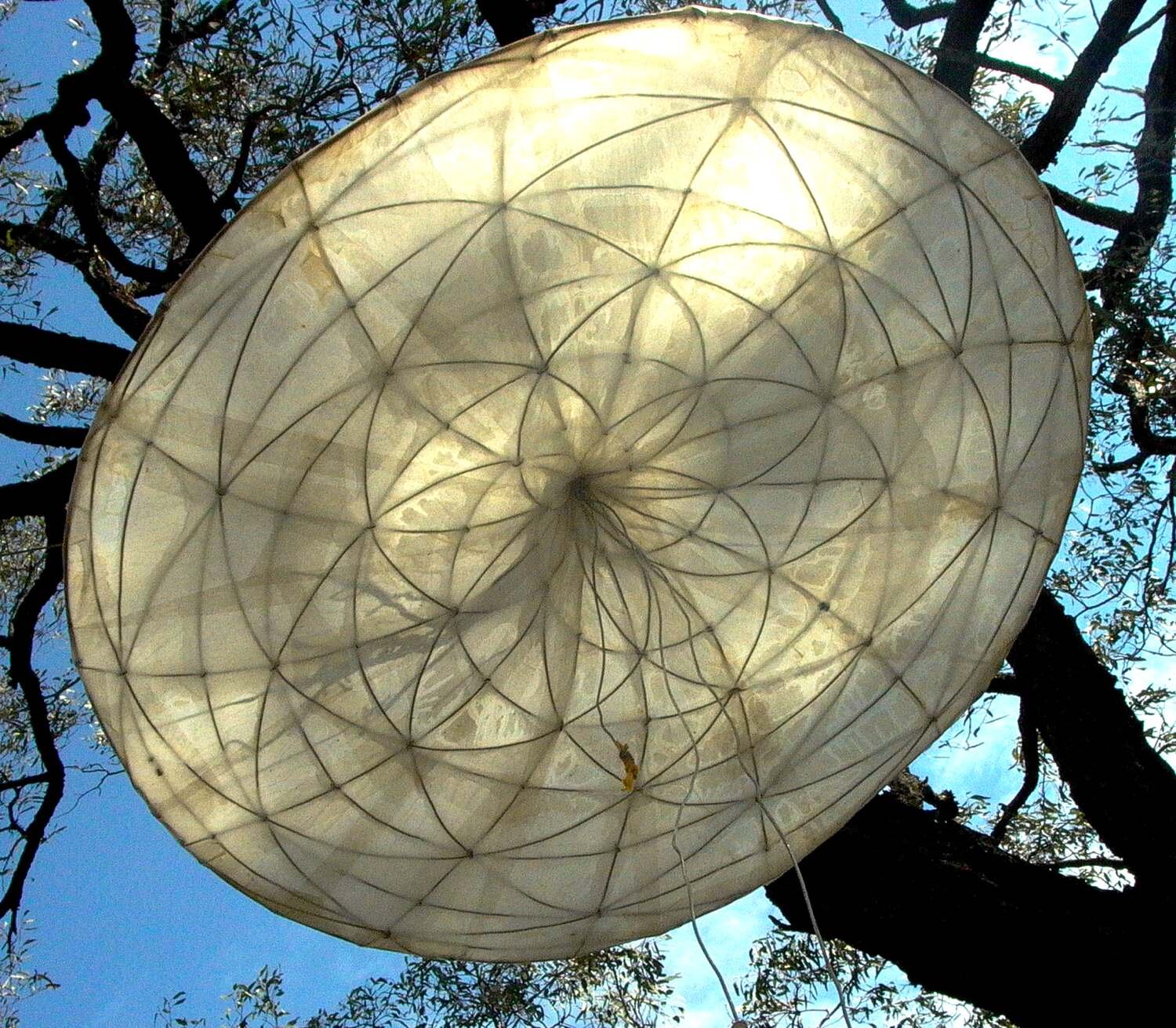
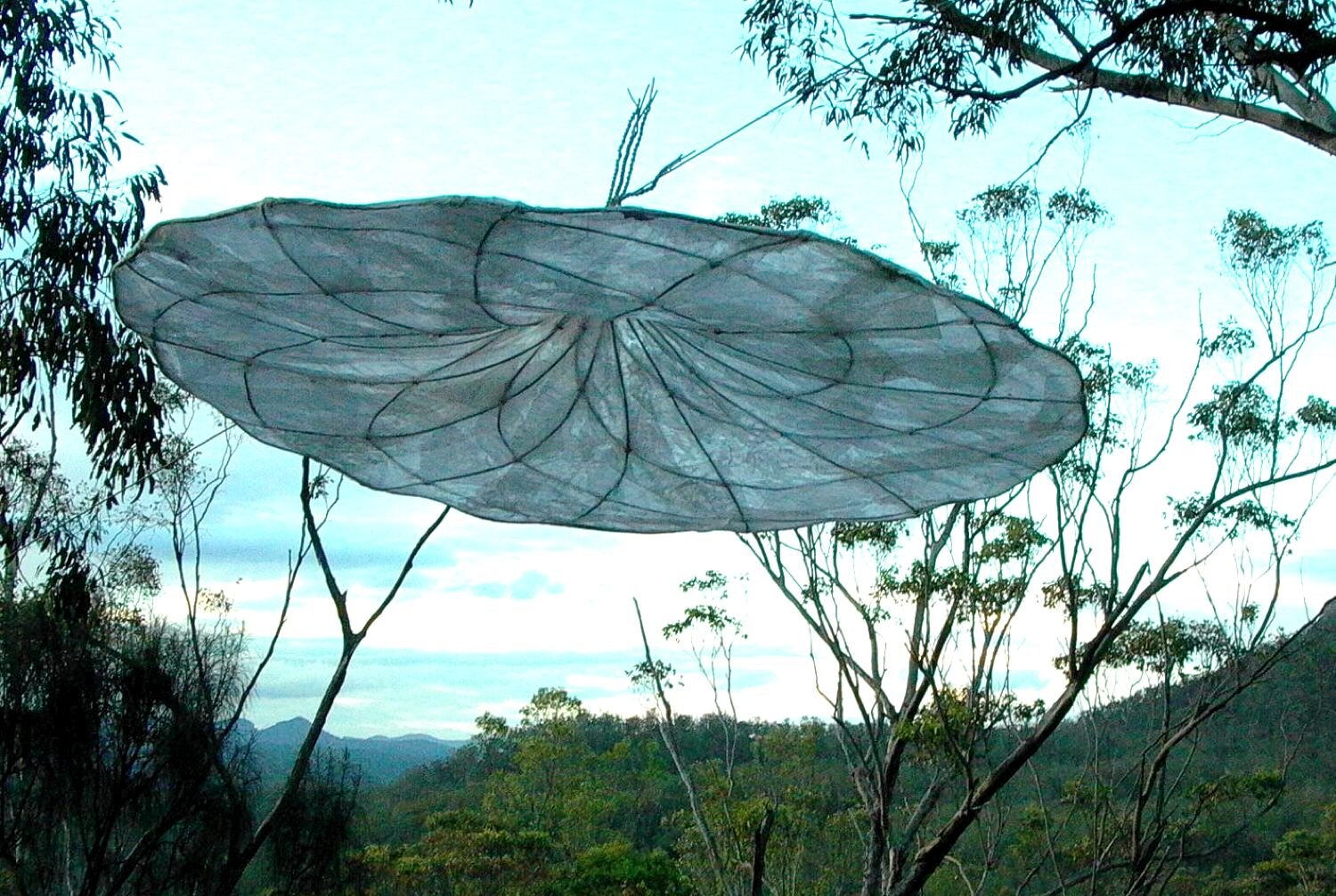
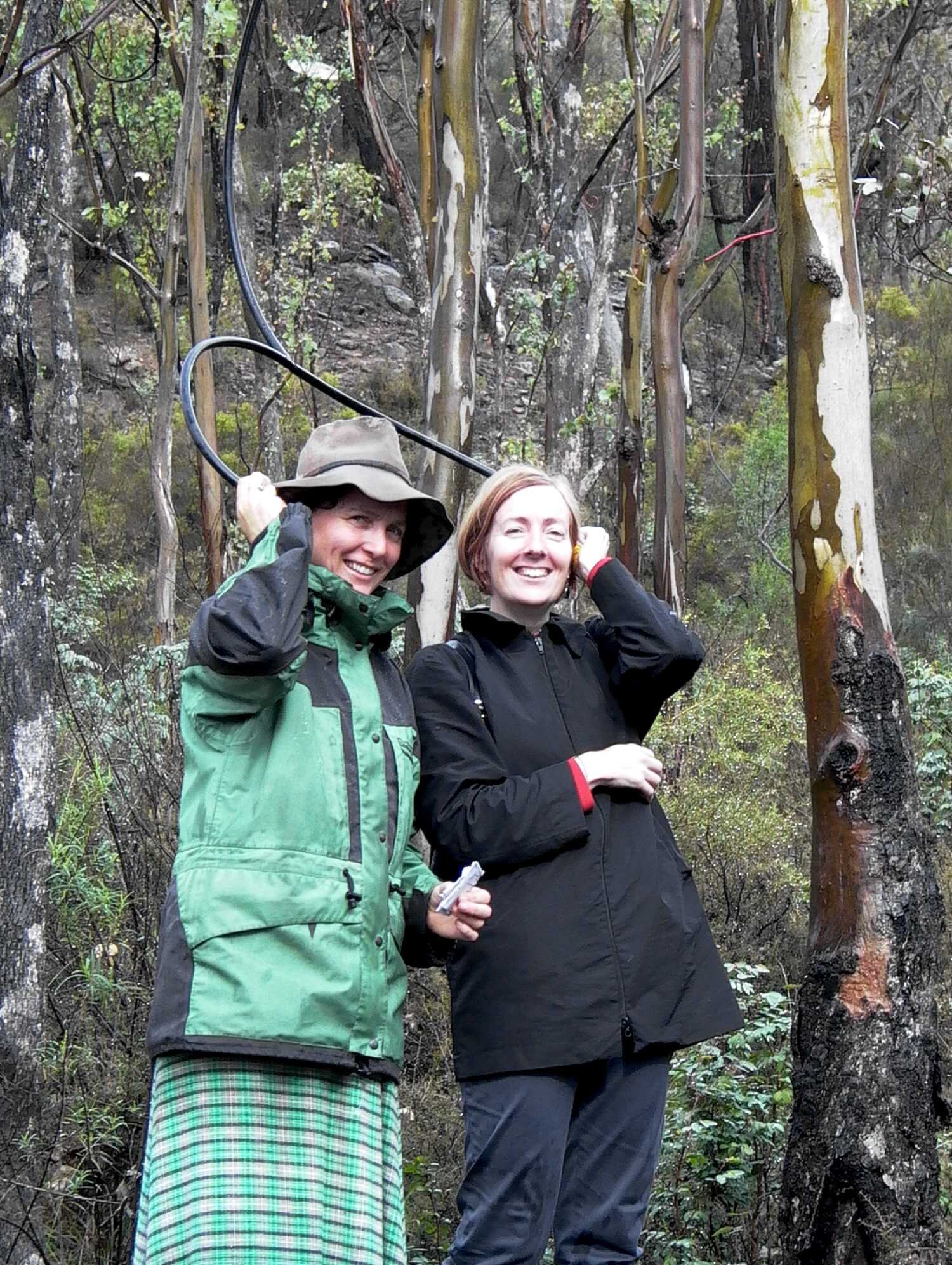

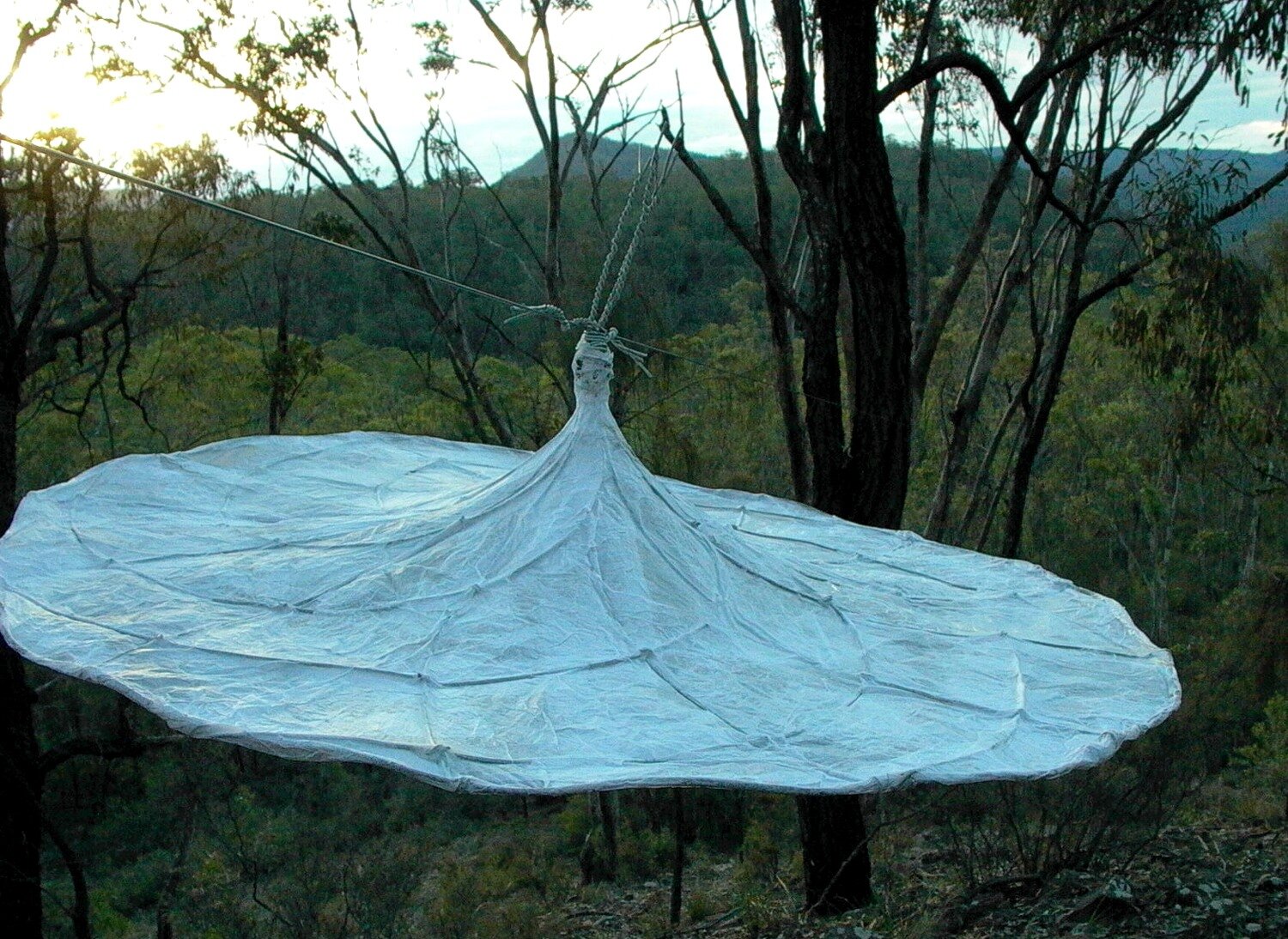

Fibonacci's Flowers
2003 - Fencing wire, aluminium wire, paper, plastic pipe
This work was created at the Burragorang International Artists' Workshops in NSW in April, 2003. A 200m length of fencing wire was stretched from the dry Ironbark country on a spur, down into a a valley of Salmon gums, zig zagging through the through the tree trunks. At critical spots along the wire hung the "Flowers", dangling down at head height, acting as passive amplifiers for the sounds of the creaking tree trunks and bush sounds in the wire. At several other places along the way hung "ear phones", stethoscope type attachments that gave a high fidelity, in depth aural picture of the sounds coming out of the bushland sound work.
